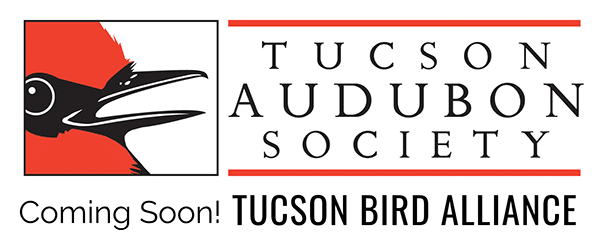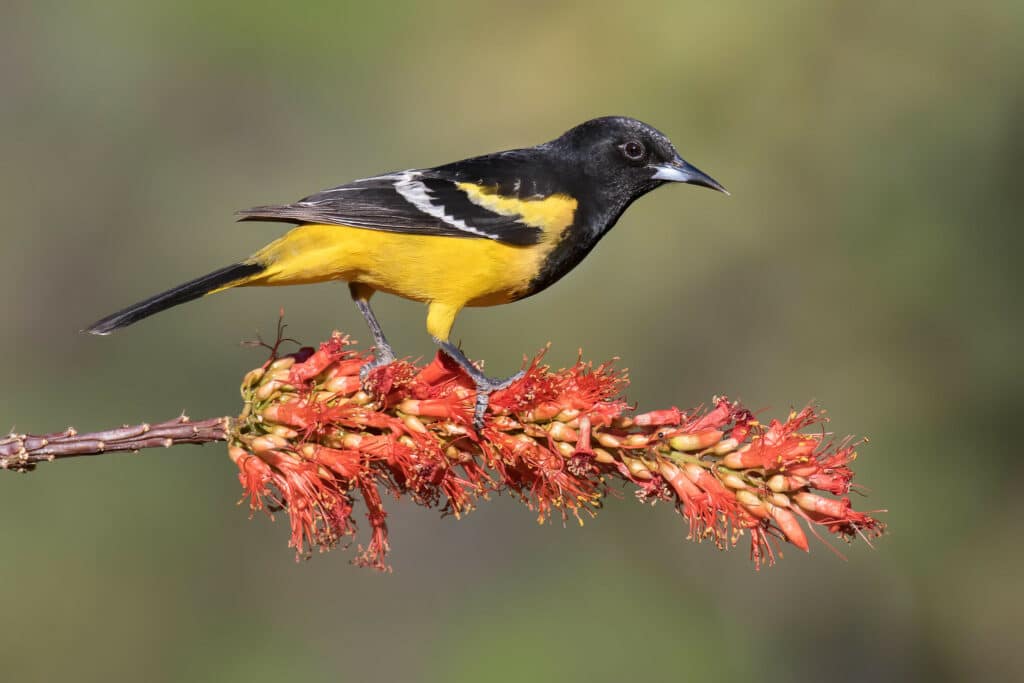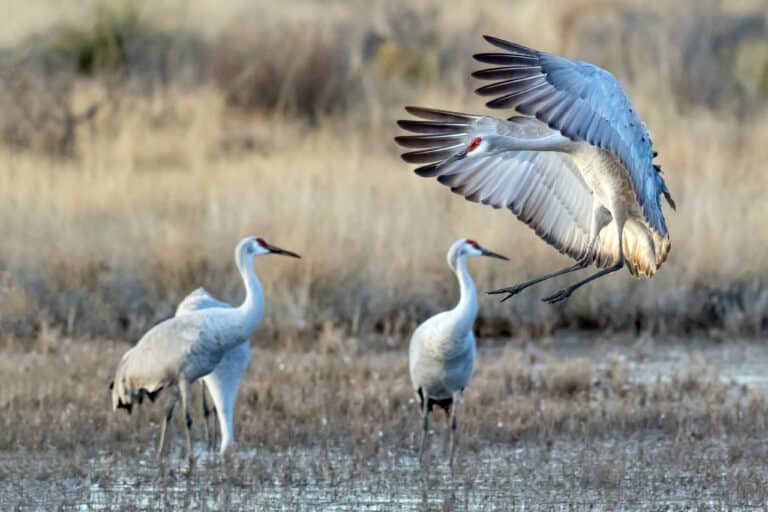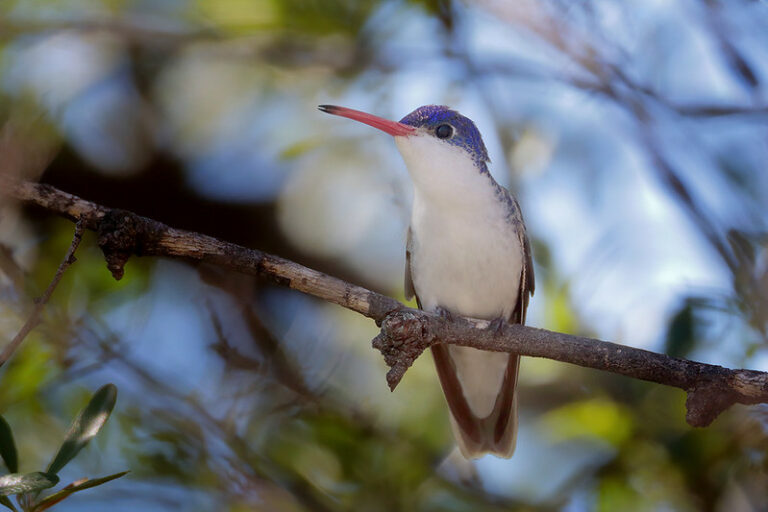Orioles are a spectacular bunch of birds, and it’s pretty difficult to pick a local favorite. If I had to choose from this assortment of eye candy, my pick would be the Scott’s Oriole. The reason is habitat-based—I really love where it lives. It’s a desert and lower mountain species of the Southwest, and it is closely associated with juniper, pinyon pine, live oak, desert palms, and especially yucca where it feeds on flower nectar and uses yucca fiber for its nests that hang from live yucca leaves (It’s sometimes called the Yucca Oriole!). Its range is restricted to arid valleys and mountain slopes where these plant species are found in the western US and a lot of Mexico. In Southeast Arizona, this means my favorite canyon, Cave Creek in the Chiricahua Mountains, is an excellent place to find a Scott’s Oriole foraging for insects and fruits down in the juniper and sycamore while using the soaptree yuccas of the hillsides to nest in—the cup-shaped nest is built lower to the ground than the taller, baglike nests of Bullock’s and Hooded Orioles. Scott’s Orioles are returning to Southeast Arizona right now and they can be relatively easy to find because they are prolific singers (the females too!). They are often one of the first species to sing in the morning, and they continue all day through the summer and even on the wintering grounds, their sweet, clear warblering notes heard at great distances.
Scott’s Orioles are blend of bright lemon-yellow and the blackest black, one of the few Icterids (blackbirds, orioles, and meadowlarks: the Icteridae family) to fully deserve this name derived from the Greek word ikteros, or “jaundice.” The sighting of a small yellow bird in ancient Greece supposedly cured the disease. Its species name of parisorum also has an interesting story: it was provided in 1838 by the French naturalist Charles Lucien Bonaparte to commemorate the Paris brothers who financed a French exploratory expedition around the time. In 1854, US General Darius Couch attempted to name the species Icterus scottii in honor of his superior, General Winfield Scott. Having already been named, the two settled on using the common name of Scott’s Oriole to commemorate the general.
Image by Matthew Studebaker




